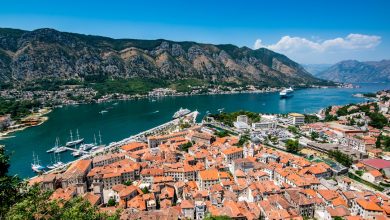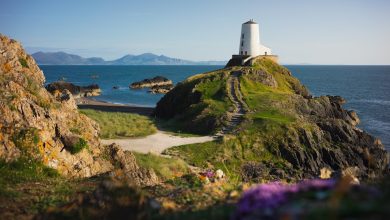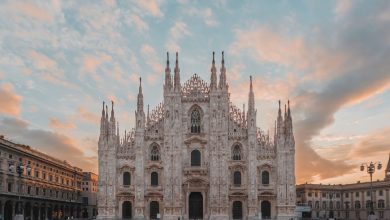
Embark on a journey through Austria’s illustrious past and vibrant present with our Vienna Travel Guide, an essential companion for travelers eager to unravel the enchanting secrets of Vienna, the country’s imperial capital. As you wander the cobblestone streets of the Innere Stadt or bask in the melodic heritage of iconic concert halls, you’ll uncover a city that harmoniously blends its historic grandeur with a lively contemporary culture. Whether you’re sipping coffee in a traditional Viennese café or strolling through the expansive gardens of Schönbrunn Palace, this guide promises to lead you through an unforgettable exploration.
Exploring Vienna’s Historic Heart: The Innere Stadt
As you embark on your journey with this Vienna Travel Guide, a must-visit is the Innere Stadt, or the historic heart of Vienna. This area is rich with centuries-old architecture, winding cobblestone streets, and a timeless atmosphere that transports you to the era of the Habsburgs. To help you navigate this enchanting district, consider these highlights:
- St. Stephen’s Cathedral (Stephansdom): A Gothic masterpiece with its ornate spire piercing the city’s skyline. Visit early to avoid the crowds and fully appreciate its architectural splendor.
- Hofburg Imperial Palace: Once the seat of the mighty Habsburg empire, the Hofburg is now home to the president of Austria and various museums like the Sisi Museum and the Imperial Apartments.
- Graben and Kohlmarkt: These are two of Vienna’s most famous shopping streets, lined with luxury boutiques and historic buildings—perfect for a leisurely stroll.
For history enthusiasts, the Plague Column is a significant monument commemorating the end of the Great Plague in Vienna, and it showcases the city’s resilience and artistic heritage. Moreover, opera lovers should not miss the State Opera House, where you can enjoy a guided tour or book a ticket to see a world-class performance.
Exploring on foot is the best way to capture the essence of the Innere Stadt, but a horse-drawn carriage ride can offer a quaint, albeit touristy, perspective. Additionally, for a unique viewpoint, climb the 343 steps to the top of St. Stephen’s South Tower.
Here’s a quick comparison to help you decide on activities:
| Activity | Recommended For | Experience Type |
|---|---|---|
| St. Stephen’s Cathedral Climb | Adventure Seekers | Historical |
| Hofburg Palace Tour | Culture Buffs | Educational |
| Carriage Ride | Romantics | Nostalgic |
In your Vienna Travel Guide, the Innere Stadt should undoubtedly be a focal point. Not only does it embody the grandeur of Vienna, but it also serves as the starting point of a journey through Austrian history and culture.
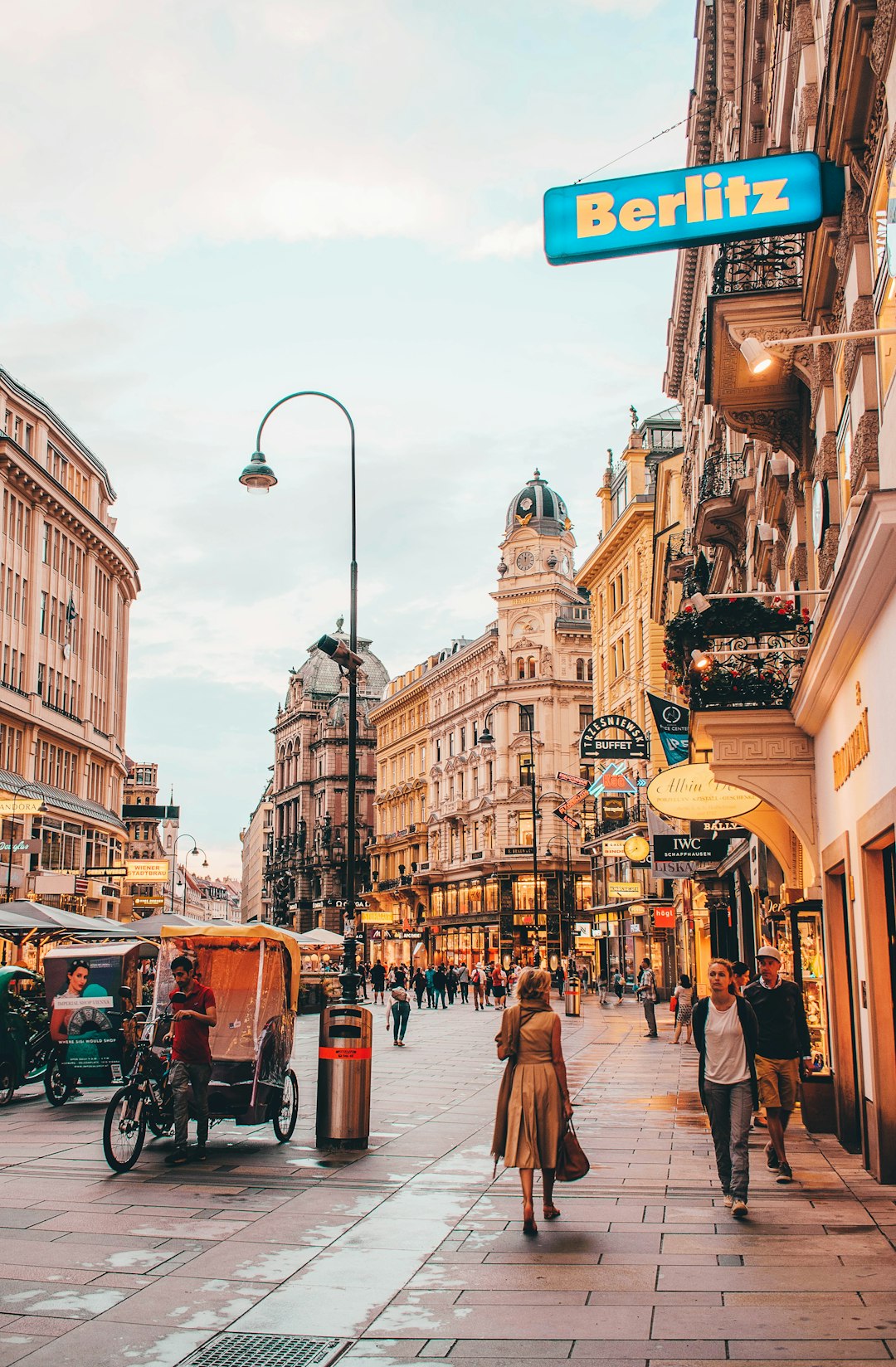
Unlocking the Musical Legacy of Vienna: A Tour of Classical Concert Halls
When you delve into this Vienna Travel Guide section, it’s like opening a musical treasure chest that has been delicately composed over centuries. Vienna’s musical heritage is incomparable, with its concert halls resonating with the echoes of legendary composers. Here, we’ll explore some of the most prestigious venues that any cultural enthusiast must add to their Vienna itinerary.
Firstly, the Musikverein is a must-see. Known for its Golden Hall, which is acclaimed for impeccable acoustics, the Musikverein has witnessed the premieres of symphonies and hosted the celebrated Vienna Philharmonic Orchestra. The annual New Year’s Concert here is a globally watched event.
- Musikverein
- Golden Hall: Exceptional acoustics
- Home of Vienna Philharmonic: Prestigious performances
Next, the Wiener Staatsoper offers a mix of opera and ballet in a historical setting that dates back to the mid-19th century. It’s not just a venue; it is an institution that encapsulates Vienna’s deep-rooted love for the performing arts.
- Wiener Staatsoper
- Opera and Ballet: Diverse repertoire
- Historical Significance: Architectural marvel since 1869
Last but not least, the Konzerthaus, which not only caters to classical music aficionados but also opens its doors to contemporary music, providing a blend of the old and new. Its halls regularly host concerts ranging from classical masterpieces to modern experimental works.
- Konzerthaus
- Versatile Venue: Classical and contemporary performances
- Inclusive Programming: Accessible to various musical tastes
As part of your Vienna travel experience, visiting these concert halls offers a rare insight into the musical genius that shaped much of Western music. Each hall has its own unique story, contributing to Vienna’s reputation as the world’s music capital. Ensure to check their calendars and possibly book tickets in advance; experiencing a performance within these walls is truly once in a lifetime opportunity that speaks to the soul of any music lover.
Remember, a tour of Vienna’s concert halls is more than just a listening session; it’s a historical journey, an aesthetic delight, and an unforgettable part of your Vienna travel guide itinerary.
With this guide, you’re not just visiting Vienna; you’re truly experiencing it.
Vienna’s Café Culture: A Journey Through Timeless Coffeehouses
Vienna’s café culture is renowned the world over, offering an inviting blend of tradition, relaxation, and indulgence. As you explore this aspect of the city through our Vienna Travel Guide, it’s easy to see why these establishments are much more than places to grab a quick coffee. They are institutions that have played a pivotal role in the social and cultural life of Vienna for centuries.
Historic Viennese Coffeehouses: A Tradition of Leisure
- Café Central: Once the hub for intellectuals like Trotsky and Freud, Café Central is a portal to the past with its grand interiors and historical ambiance.
- Café Landtmann: Operating since 1873, this café embodies elegance and has been a favored spot for celebrities and politicians.
The Viennese Coffee Experience
- Melange & More: Discover a variety of coffee specialties such as the famous ‘Melange,’ a creamy concoction similar to a cappuccino.
- Sachertorte Delight: No visit is complete without savoring a slice of Sachertorte, a rich chocolate cake that perfectly complements Viennese coffee.
The Viennese Coffeehouse Atmosphere
These coffeehouses are characterized by their timeless charm. With their opulent chandeliers, marble tables, and waiters dressed in traditional attire, it’s like stepping into another era. Here’s what sets them apart:
- A Slow Pace: Sipping coffee is an unhurried affair. You’re encouraged to linger over your cup, perhaps with a newspaper or a good book in hand.
- Cultural Hotspots: Many coffeehouses host events like poetry readings and piano nights, enriching Vienna’s artistic landscape.
Incorporating the fine art of leisure into your travel itinerary, this part of your Vienna Travel Guide will help you to embrace the Viennese way of life. Whether you’re starting your day with an aromatic coffee or taking a mid-afternoon break, Vienna’s coffeehouses are the perfect antidote to the hustle and bustle of sightseeing.
The Imperial Majesty: Schönbrunn Palace and Gardens Unveiled
If there is a jewel in the crown of Vienna’s majestic attractions, it’s undoubtedly the Schönbrunn Palace and Gardens. A quintessential part of any Vienna Travel Guide, the grandeur of Schönbrunn is a marriage of Baroque architecture and the symmetry of nature’s beauty. This former imperial summer residence truly encapsulates the splendor of the Habsburg dynasty.
Upon approaching this UNESCO World Heritage site, the immensity of history and heritage is palpable. Visitors are greeted with:
- The Palace: A sprawling edifice adorned with 1,441 rooms that boast of opulent décor and intricate design. A guided tour of the state rooms is a must for understanding the daily life of Austria’s royalty.
- The Gardens: Comprising an area of nearly 435 acres, the gardens are a microcosm of tranquility and aesthetic perfection. The meticulously arranged flowerbeds, impressive fountains, and statues are laid out in a geometric pattern, providing a visual feast.
The highlight, however, is the Gloriette structure—a monument located on a hilltop overlooking the palace that offers a panoramic view of Vienna’s skyline. Furthermore, the labyrinth-established in the 18th century, the palm house with exotic plant species, and the oldest functioning zoo in the world, the Tiergarten Schönbrunn, add layers to the site’s appeal.
For those interested in the nuances of imperial lifestyles, certain features are not to be missed:
- The Grand Tour: Includes 40 of the most impressive rooms and provides insights into the lives of Emperor Franz Joseph and his wife, Empress Elisabeth.
- The Privy Garden: Part of the private gardens of Emperor Maximilian II, this is a peaceful retreat with its own unique charm.
No Vienna Travel Guide would be complete without recommending a significant chunk of your itinerary dedicated to exploring the Schönbrunn Palace and Gardens. It’s not merely a historic landmark; it’s a walk through Austria’s royal narrative—a tale steeped in opulence, culture, and the arts.
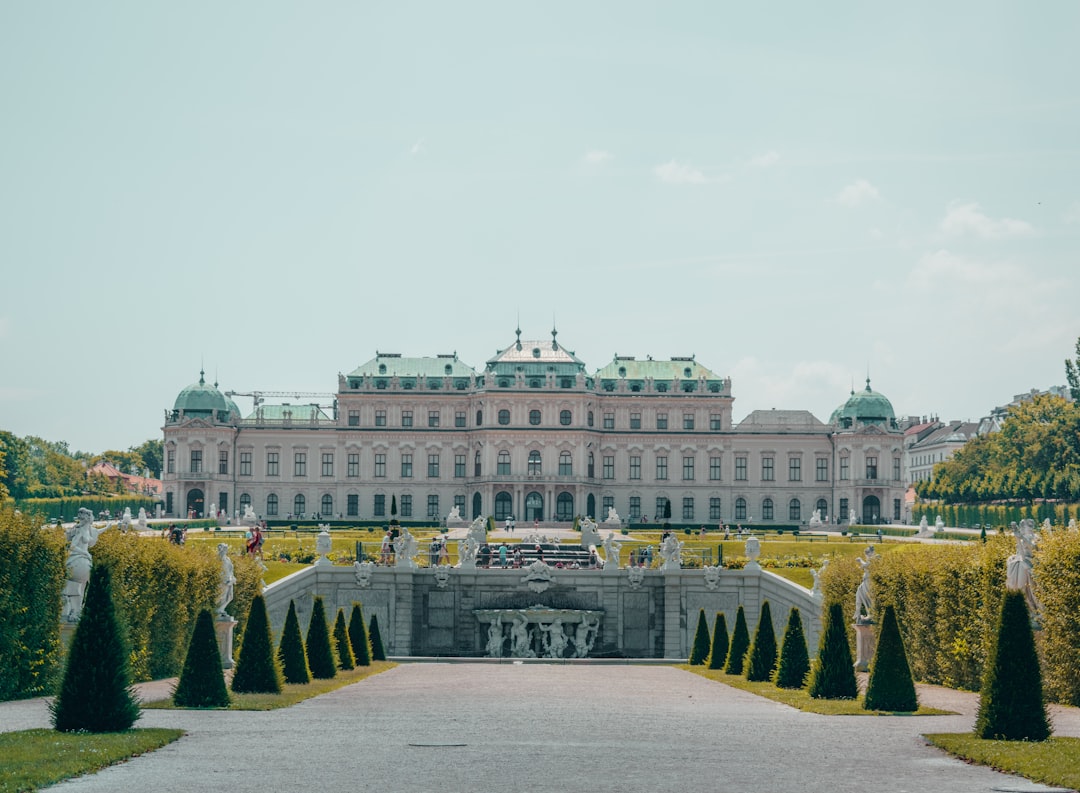
Museum Highlights in Vienna: Art and History Combined
Vienna, the city renowned for its cultural heritage, holds within its bounds an impressive array of museums that eloquently speak of its artistic and historical significance. A visit to Vienna isn’t complete without immersing oneself in the extraordinary collections showcased in its world-famous institutions. As part of your Vienna Travel Guide, it’s imperative to highlight the top museums one should not miss on their journey through Austria’s imperial capital.
Kunsthistorisches Museum (Museum of Art History)
A treasure trove for art lovers, the Kunsthistorisches Museum houses remarkable works from ancient Egypt to the late 18th century. Here, you can marvel at masterpieces by artists like Raphael, Vermeer, and Rembrandt.
- Main attractions: The Picture Gallery, the Egyptian-Oriental Collection, the Collection of Greek and Roman Antiquities.
- Visitor tips: Reserve tickets online to avoid long queues and consider a guided tour to fully appreciate the vast collections.
Belvedere Palace Museum
Split between the Upper and Lower Belvedere, the museum displays a rich array of Austrian art, including the world’s largest collection of Gustav Klimt paintings.
- Must-see artworks: “The Kiss” and “Judith” by Gustav Klimt.
- Extra perks: The palace gardens are perfect for a leisurely walk with stunning views of the city.
Albertina Museum & Art Gallery
The Albertina not only offers an exquisite art collection but also affords a glimpse into Habsburg imperial luxury.
- Highlights: One of the largest and most important print rooms in the world, with drawings and old master prints, and modern graphic works, photographs, and architectural drawings.
- Know before you go: Check for current exhibitions, which are often unique and not to be missed.
Incorporating visits to these museums adds layers of depth to the narrative of your travels in Vienna. Understanding the artwork and the history behind such pieces brings one closer to the heart of Viennese culture. As an essential component of any Vienna Travel Guide, these museums not only exhibit works of art but also present stories woven into the very fabric of Vienna’s history. Whether you are an art aficionado or a history enthusiast, the museums in Vienna are sure to enrich your Austrian adventure.
A Walk in the Park: Vienna’s Prater and Outdoor Escapes
As any comprehensive Vienna Travel Guide will tell you, Vienna isn’t just about imperial grandeur and stirring music—it’s also a city that cherishes its green spaces. Among the most beloved is the Prater, a park that offers a delightful escape from the bustle of city life.
Here’s what you can expect in a stroll through the Wien Prater:
- Expansive Greenery: The Prater is vast, encompassing woodlands, meadows, and manicured gardens. It’s perfect for jogging, cycling, or simply walking around and taking in the fresh air.
- The Wurstelprater Amusement Park: For those looking for a bit of fun, the Prater has an amusement park with rides ranging from the nostalgic to the heart-pumping. The iconic Wiener Riesenrad Ferris wheel is a must-see and offers panoramic views of the city.
- Historical Significance: This park has been a public leisure space since 1766, giving it over two centuries of history.
- Diverse Outdoor Activities: Beyond leisurely strolls, the Prater can be a place for sports lovers, with facilities for tennis, soccer, and even horseback riding.
In your Vienna Travel Guide itinerary, ensure to block off some time for the Prater. It’s not just a park; it’s an experience that embodies the spirit of Vienna—where tradition meets leisure and culture blends seamlessly with nature.
Advanced tip: Visit during different seasons to see the park’s transformation, especially in spring when the flowers bloom, or in autumn when the leaves create a vibrant tapestry of colors.
Your experience in Vienna is incomplete without a day at the Prater. This outdoor sanctuary represents a slice of Viennese life that is cherished by both locals and visitors alike.
Tasting Vienna: Culinary Delights and Local Eats
When traversing the cobblestone streets of Vienna, the aromatic wafts of local eats will inevitably beckon you to take a sensory journey. Vienna’s culinary delights are both an homage to its imperial past and a testament to its dynamic present. Here’s what you shouldn’t miss according to every seasoned Vienna Travel Guide:
- Wiener Schnitzel: Perhaps the most iconic Viennese dish, this tender veal cutlet, breaded and fried to a perfect golden crisp, is a must-try.
- Apfelstrudel: This apple strudel is the sweet counterpart to the hearty Schnitzel, offering a delightful mix of tart apples, sweet raisins, and warm spices encased in a flaky crust.
- Sachertorte: No visit to Vienna is complete without savoring this decadent chocolate cake with a layer of apricot jam, traditionally accompanied by a dollop of whipped cream.
Moreover, Vienna’s coffeehouse culture is renowned, and a visit to an age-old establishment like Café Central or Café Sperl allows you to indulge in the hallowed Viennese tradition of coffee and cake while soaking up an atmosphere steeped in history.
For a truly local experience, seek out Vienna’s Beisls — small bistros offering traditional Austrian fare. And let’s not forget the Heurigers, the quaint wine taverns found in Vienna’s outskirts, where you can enjoy locally produced wines.
Here’s a quick comparison of where to feast on these delights:
| Culinary Experience | Suggested Venue |
|---|---|
| Wiener Schnitzel | Figlmüller |
| Apfelstrudel | Café Landtmann |
| Sachertorte | Hotel Sacher |
| Coffee & Cake | Café Central |
| Authentic Beisls | Gasthaus Pöschl |
| Heuriger Wine | Heuriger Wolff |
Each venue offers a unique slice of the Viennese palette, allowing you to travel not just through the city but through a rich culinary landscape. In short, any Vienna Travel Guide will agree that the essence of Vienna can be savored through its gastronomy. Breaking bread (or slicing schnitzel, for that matter) is an essential part of the Viennese voyage. Bon appétit, or as the locals would say, “Mahlzeit!”
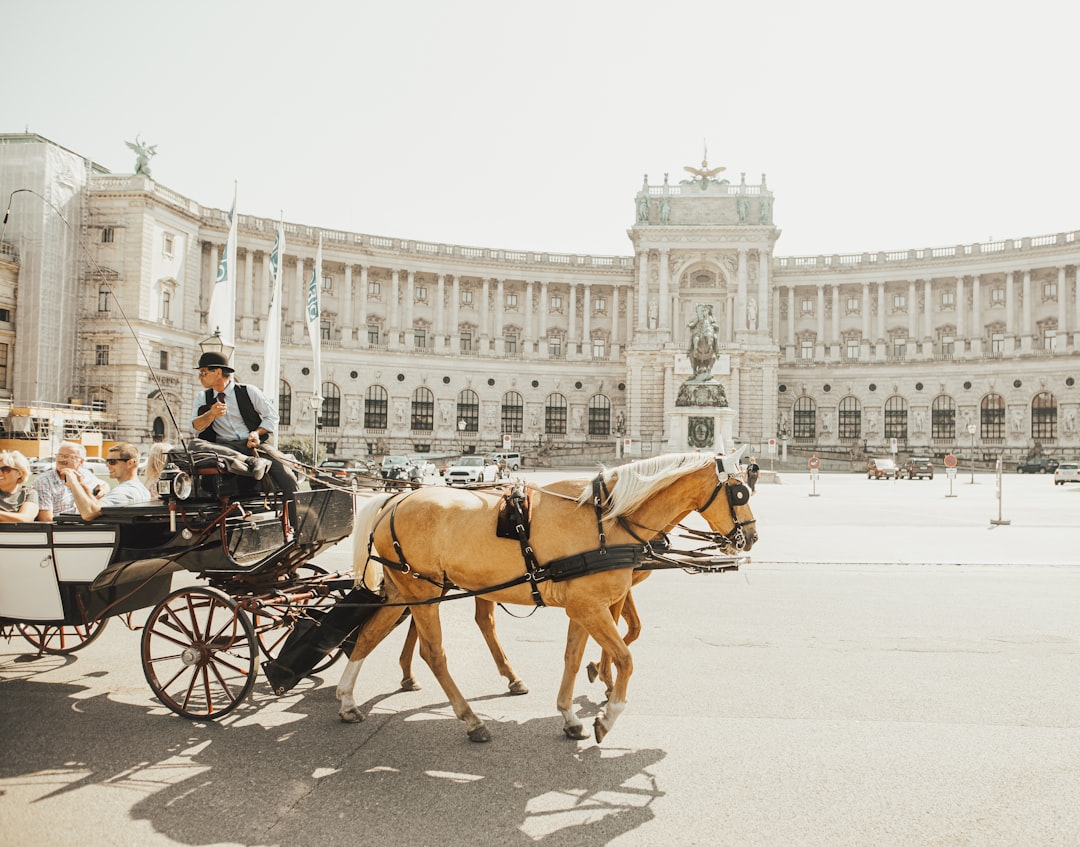
Viennese Markets and Shopping: From Naschmarkt to Boutique Finds
Embarking on a shopping adventure in Vienna introduces travelers to a vibrant mix of market traditions and contemporary boutique experiences. As any comprehensive Vienna Travel Guide will tell you, the blend of old and new defines this city’s unique allure.
First stop for any market enthusiast is the famed Naschmarkt. This market is a haven for foodies and a treasure trove for those in love with local flavor:
- Variety: Over 100 stalls offer fresh produce, exotic spices, cheese, baked goods, and more.
- Atmosphere: The lively exchanges between vendors and shoppers create an energetic buzz.
- Dining: It’s not just about shopping; numerous eateries encourage lingering over mouthwatering dishes.
For those seeking a more exclusive shopping affair, Vienna’s boutique scene should not be missed. The city’s boutique shops range from high-end fashion to handcrafted souvenirs, ensuring something for every taste and budget. Here’s what you can expect:
- Personalized Service: Smaller boutiques provide a more intimate shopping experience.
- Unique Finds: Discover items that stand out from the typical tourist offerings.
- Local Designers: Support the local economy and take home a piece of Viennese creativity.
In navigating between the markets and boutique finds, remember that the charm of shopping in Vienna lies in the exploration. So, as this Vienna Travel Guide suggests, take your time to stroll, sample, and savor the diversity of shopping experiences in Austria’s imperial capital. Whether you are hunting for a memorable keepsake or simply enjoying the window-shopping, Vienna’s markets and boutiques offer a shopping experience as rich and varied as the city itself.
Navigating Vienna with Ease: Transportation Tips for Travelers
As a trove of imperial history, baroque streetscapes, and a rich artistic legacy, Vienna calls to travelers with a siren song of culture and beauty. A crucial component of any Vienna Travel Guide is understanding how to navigate the city effectively and effortlessly. Here are some tips that will enable you to move through Vienna with the confidence of a local.
Public Transport Perks
- Efficiency: Vienna boasts a highly efficient and comprehensive public transportation system including metros (U-Bahn), trams (Straßenbahn), and buses.
- Vienna City Card: Consider purchasing the Vienna City Card which offers unlimited travel for various durations and handy discounts for attractions.
- Timely App: Use mobile applications like the official Wiener Linien app to plan your routes with real-time updates.
The Vienna Metro (U-Bahn)
- Coverage: With multiple lines crisscrossing the city, the U-Bahn is your best bet to reach major sights quickly. It operates from roughly 5:00 am to midnight, with extended service on weekends and holidays.
- Accessibility: Most stations are accessible with lifts and escalators, making it friendly for travelers with disabilities.
Tram Hopping
- Scenic Routes: Trams offer a scenic view of Vienna’s architecture; notably, tram line 1 loops around the historic core.
- Intersection Points: Many tram lines intersect with U-Bahn stations, facilitating seamless connections.
On Two Wheels
- City Bike Vienna: For a more personal experience, the City Bike Vienna service provides an affordable way to rent a bike and explore on your terms.
Walking: Lastly, Vienna’s most charming districts are often best experienced on foot. Meander through cobbled lanes and across imperial squares to capture the essence of this historic city.
Incorporating these Vienna Travel Guide tips into your travel plans will ensure that you can navigate the Austrian capital with ease, leaving more time to soak in the atmospheric charm and hidden gems of Vienna. Remember, every mode of transport offers a different perspective of this enchanting city, so mix and match to suit your pace and preferences.
